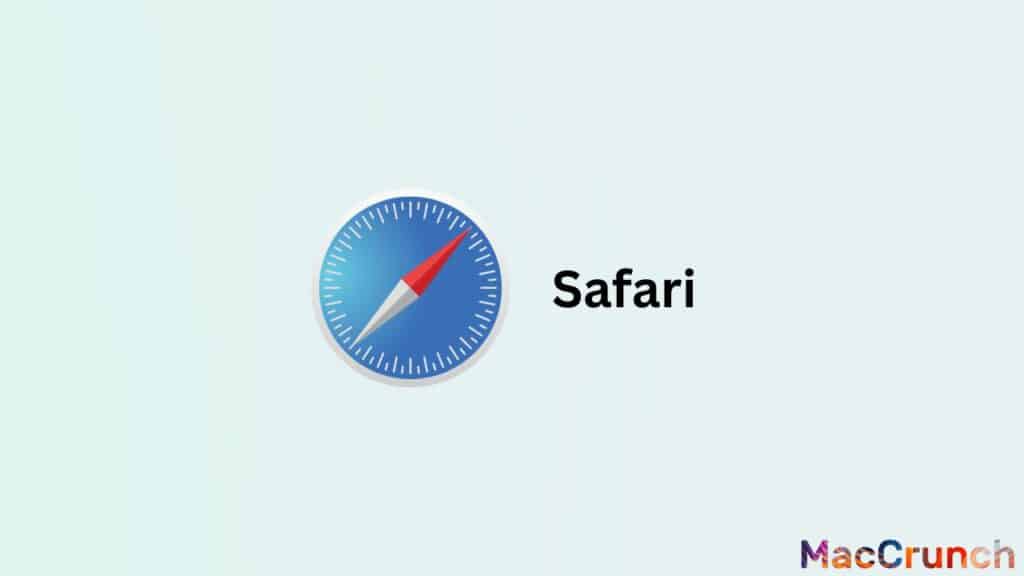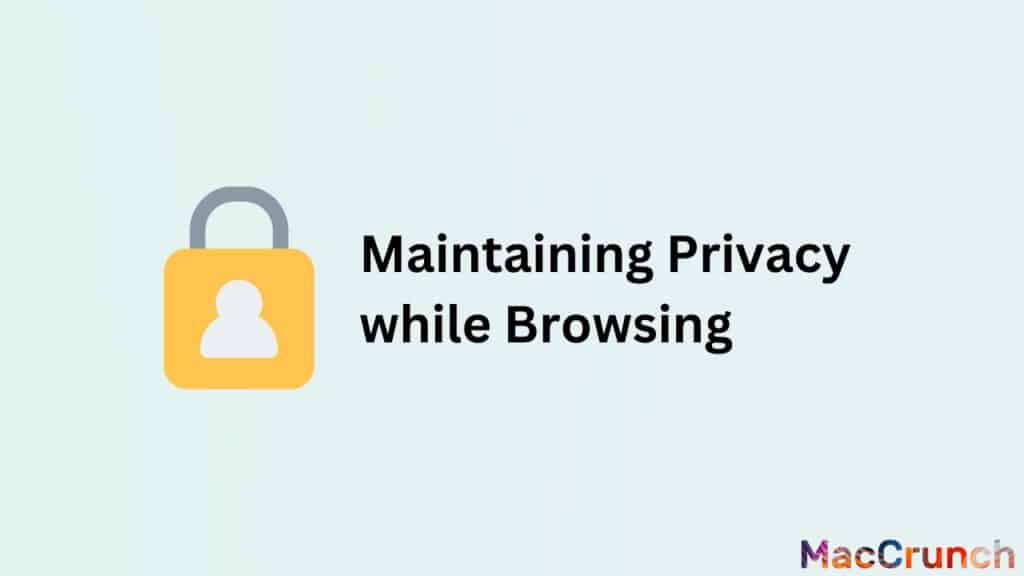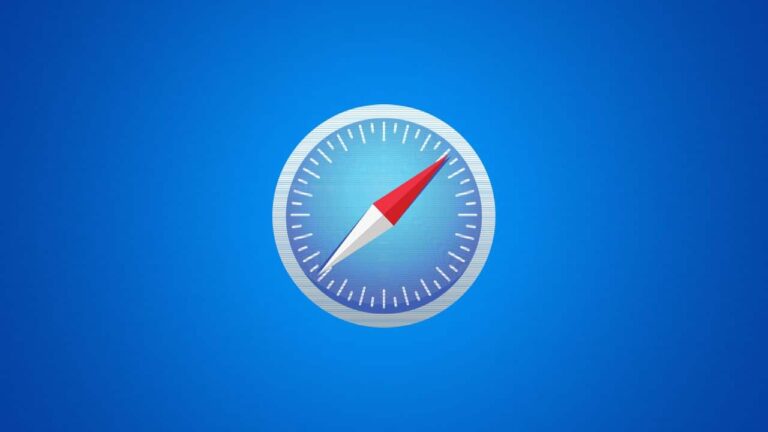Many people worry a lot about their online privacy in the digital age we live in now. People need to take steps to protect their privacy while surfing the web because more and more personal information is being shared and stored online.
Safari is one of the most popular browsers. Millions of people all over the world use it. Apple made this browser, which is known for its easy-to-use interface, fast browsing speed, and security features. But, as with any browser, users still need to be aware of possible privacy threats.
This article’s goal is to teach people how important it is to protect their privacy while they are browsing, and to give them tips on how to do so when using Safari. We will talk about the different privacy settings Safari has and how users can use them to make sure their online privacy is safe.
Table of Contents
Uncovering the Secrets of Safari Browsing History

Browsing history is a list of all the websites and web pages that a person who uses a web browser has been to. This information is saved on the device that was used to browse, so the user can easily go back to websites or web pages they have already seen.
What is Stored in Safari Browsing History
Safari stores its browsing history in a database on the device. This database keeps track of the URL, title, date, and time of each site that was visited. It also has information about how often people visit each website and how long they stay there. This information can be helpful for someone who wants to quickly go back to a website they have recently visited, but it can also be a privacy concern.
How Browsing History Affects your Privacy
There are several ways that your browsing history can affect your privacy. For example, if someone uses a computer that is shared, it is easy for someone else who uses the same computer to look at their browsing history and see the websites they have visited. This can be especially scary if the person has been to websites that have private or sensitive information on them.
Some websites may also use tracking technologies like cookies to learn about how a person uses the site. This information can be used to make a profile of the person’s interests and behavior, which can then be sold to advertisers or used for targeted advertising.
Last but not least, government agencies or law enforcement can also look at your browsing history as part of an investigation. In this case, the history of what you have been looking at can be used as evidence in court or as part of an investigation into a crime.
People can protect their privacy by regularly clearing their browsing history or by using private browsing mode when they visit personal or sensitive websites. They can also use privacy-focused web browsers or add-ons that block tracking technologies and add more privacy features to their browsers.
Deleting Browsing History on Safari

Getting rid of Safari’s browsing history is an important way to protect your privacy and keep your device running smoothly. Your browsing history is a list of the websites and pages you have been to, as well as the date and time of each visit. This article will talk about two ways to delete your Safari browsing history: the Quick and Easy Method and the Advanced Method.
Quick and Easy Method
1. Clearing Recent History
This is the fastest and easiest way to get rid of your Safari browsing history. Follow these steps to do this:
- On your Mac or iOS device, open Safari.
- Select “Clear History” from the “History” menu.
- In the window that pops up, choose whether you want to clear the last hour, today, today and yesterday, or all of history.
- Click the button that says “Clear History.”
This will get rid of everything you have looked at on Safari recently.
2. Clearing Specific Websites
If you want to get rid of the history of certain websites, you can do so by doing the following:
- On your Mac or iOS device, open Safari.
- Select “Show History” from the “History” menu.
- Find the website you want to delete in the History window and right-click on it (or hold down the Control key and click).
- Choose “Delete” from the menu that appears.
- Repeat the steps for each site you want to get rid of from your browser’s history.
Advanced Method
In this method, we will talk about how to delete your cookies, cache, and other browsing data, as well as your browsing history.
1. Clearing Cookies and Cache
Cookies are small text files that sites you visit put on your device. They are used, among other things, to remember your preferences and log-in information. Cache is the name for the temporary files that your browser stores on your device to speed up the loading of sites you visit often. Follow these steps to clear Safari’s cookies and cache:
- On your Mac or iOS device, open Safari.
- Select “Preferences” from the “Safari” menu (or “Settings” on iOS devices).
- Click on the “Privacy” tab in the “Preferences” (or “Settings”) window.
- Click the “Manage Website Data” or “Website Data” button on your iOS device.
- In the window that pops up, choose the cookies and cache you want to get rid of and click “Remove.”
- Repeat the steps for each site whose cookies and cache you want to get rid of.
2. Clearing Other Browsing Data
You might also want to get rid of saved passwords, form data, and your download history. Follow these steps to clear this information from Safari:
- On your Mac or iOS device, open Safari.
- Select “Preferences” from the “Safari” menu (or “Settings” on iOS devices).
- Click on the “Privacy” tab in the “Preferences” (or “Settings”) window.
- Click the “Remove Now” button after checking the boxes next to the types of data you want to get rid of.
What Could be Preventing Me from Deleting Safari History

You might not be able to delete Safari history on your iOS device for a number of reasons. Some of the most common ones are:
- Restrictions: If your device is set up to have restrictions, you might not be able to clear Safari’s history. To see if restrictions are on, go to “Settings” > “General” > “Restrictions” and make sure that “Safari” is not turned off. If that is the case, you will not be able to get rid of your history.
- iCloud Sync: If you have iCloud sync turned on for Safari, your browsing history may be shared across all of your devices. To see if iCloud sync is turned on, go to “Settings” > “Your Name” > “iCloud” and make sure that “Safari” is turned on. If so, you will need to delete your history on all of your devices to get rid of it completely.
- Private Browsing Mode: If you were using Private Browsing mode when you went to certain websites, those sites will not be saved in your history. Look for the “Private” icon in the top left corner of the Safari window to see if you are in Private Browsing mode.
- Third-Party Software: It is possible that some third-party software is making it hard for you to delete Safari’s history. For example, you might not be able to clear your history if you have parental control software. If you think this is the case, try turning off the software or uninstalling it, and then try to delete your history again.
- iOS Software Problem: Sometimes, you might not be able to delete your Safari history because of a problem with your iOS software. If you have tried all of the above steps and still can not delete your history, try restarting your device or updating to the latest version of iOS.
Tips for Maintaining Privacy while Browsing

Maintaining privacy while browsing is an important part of using the internet, especially in the modern world where personal information and online activities are valuable commodities. In this section, we will talk about three things you can do to keep your browsing private: regularly clearing your browsing history, using “incognito mode,” and installing plugins that protect your privacy.
Regularly Clearing Browsing History
Your browsing history is a list of the websites you visit, the pages you look at, and the links you click on while using the internet. A good way to protect your privacy is to clear your browsing history often. When you clear your browsing history, you get rid of all the evidence of what you did online and stop other people from seeing what you did. By clearing your browsing history, you can also free up space on your device and make your web browser run better.
To clear your browsing history, you need to go to your web browser’s settings or options. Different browsers have slightly different steps, but the main steps are the same. For example, in Google Chrome, you can click on the three dots in the upper right corner, choose “History,” and then click on “Clear browsing data.” In Mozilla Firefox, you can click on the three horizontal lines in the upper right corner, choose “History,” and then click on “Clear Recent History.”
Using Incognito Mode
Incognito mode, which is also called “private browsing,” is another way to keep your browsing private. When you use “incognito mode,” your web browser does not keep track of what you do online. This means that your browsing history, cookies, and cache will not be saved, and other people will not be able to see them.
Incognito mode is helpful when you want to keep your online activities private, like when you are shopping for gifts or researching sensitive topics. To use incognito mode, you have to go to your web browser’s settings or options and choose the incognito mode option. If you click on the three dots in the upper right corner of Google Chrome, you can choose “New Incognito Window.” If you click on the three horizontal lines in the upper right corner of Mozilla Firefox, you can choose “New Private Window.”
Installing Privacy-Focused Plugins
Plugins that focus on privacy are software tools that make your web browser’s privacy features better. To protect your privacy, they can block trackers, stop data collection, and encrypt your data. There are a lot of privacy-focused plugins for different web browsers, and they are easy to install from the store for that browser.
For instance, the Privacy Badger plugin stops third-party trackers from getting your information without your permission. The HTTPS Everywhere plugin encrypts your information so that it can not be read by others. The uBlock Origin plugin blocks ads and trackers, making your online experience and privacy better.
Final Notes
Getting rid of your Safari browsing history is easy and quick, and it can help you keep your privacy and safety online. If you follow the steps above, you will be able to get rid of all traces of your online activity, keeping your sensitive information safe. Clearing your Safari browsing history is an important part of managing your online presence, whether you are worried about privacy, want to free up space on your computer, or just want to start over.
People Also Asked
A lot of our readers have been worried about privacy and the need to clear their Safari browsing history. Here are some of the most frequently asked questions we have gotten about this subject:
Can I delete specific items from my history instead of clearing everything?
Yes, you can choose what to delete from your history in Safari instead of deleting everything. To do this, go to the “History” menu, find the item you want to delete, and click “Remove” or “Delete.”
Is there a way to prevent Safari from keeping a record of my browsing history?
Use “Private Browsing” to stop Safari from keeping track of what you have been looking at. When you turn on Private Browsing, Safari will not remember the websites you visit, your search history, or any AutoFill information. To use Private Browsing, click “File” and choose “New Private Window” from the menu.
What happens to my saved passwords and autofill information when I clear my history?
When you clear your history in Safari, you will also lose any saved passwords and autofill information. But you can still find your saved passwords in the “Passwords” section of the “Settings” app, and you can get your autofill information back by putting it in again in Safari.

